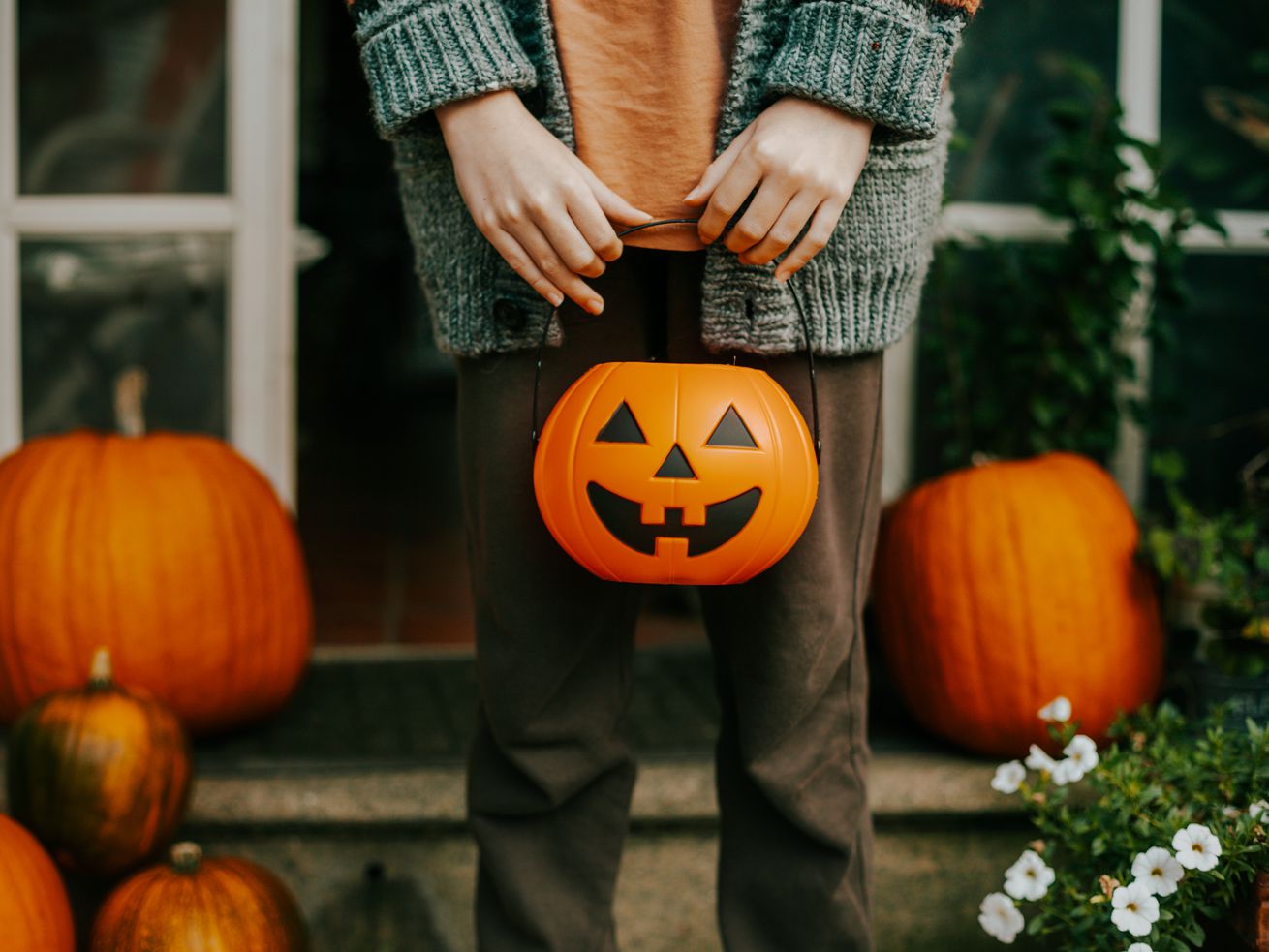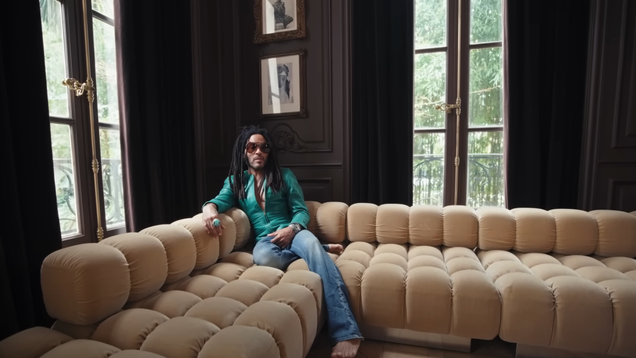 Halloween might look a little different, but there are still scares and sweets. | Getty Images
Halloween might look a little different, but there are still scares and sweets. | Getty Images
Candy companies, haunted houses, and Party City are still ready for the spookiest holiday.
Right now, I should be wandering the blood-soaked halls of a decrepit house. There should be a chainsaw-wielding clown waiting in the shadows. I should be struggling to see in the dark, about to suffer a mild panic attack when an air cannon shoots me in the face. Instead, I’m sitting on my couch alone, with no demented clowns in sight.
You see, I’m supposed to be at Universal Studios, celebrating the 30th anniversary of their iconic haunted theme park event, Halloween Horror Nights. Unfortunately, the event was called off in the wake of the Covid-19 pandemic. For Halloween fanatics like me, the weeks leading up to October 31 are the most wonderful time of the year. They’re normally packed with haunted attractions, shopping trips to stock up on candy and décor, party planning, and agonizing over what costume to wear. But there’s an extra chill in the air this fall and it happens to be a pandemic.
It’s fair to say Covid-19 has spooked Halloween. Los Angeles already banned trick-or-treating while other municipalities debate whether to follow suit. Most of the country’s biggest Halloween events are canceled, including Halloween Horror Nights, Walt Disney World’s Oogie Boogie Bash, Knott’s Scary Farm, the Greenwich Village Halloween Parade, and the West Hollywood Halloween Carnival. Even the nation’s purveyor of culturally divisive marshmallow candies, Peeps, suspended production. For better or worse, that means no pumpkin-, ghost-, or Frankenstein-shaped marshmallows until 2021.
Still, the $8.8 billion Halloween industry is nothing if not creative and resourceful. Even World War II didn’t stop Americans from trick-or-treating and putting on parades. While the holiday will certainly look different this year, it’s far from canceled.
Peeps may be on hiatus, but other candy companies like Hershey are more optimistic. In the US, the brand launched a color-coded interactive map to track the Covid-19 risk level of every county and offer safe trick-or-treating suggestions. In Canada, they partnered with Snapchat to gamify trick-or-treating. The result, “Hershey’s Treat Quest,” will allow kids to hunt for candy at home using augmented reality.
“We are expecting upticks in respect to celebrating at home,” says Ola Machnowski, senior marketing manager for Hershey Canada. “This year, Halloween does fall on a Saturday, so parents are going to have the interesting dilemma of, ‘How do I keep my child occupied for a full day?’ versus just the evening.” At any rate, Hershey attributes half of its Halloween sales to people buying candy for themselves and their families to consume at home (something I’d know nothing about). Rampant stress eating certainly shouldn’t hurt those numbers.
Mars Wrigley, which makes M&Ms, Skittles, and Snickers, has its own online plans, launching a digital Treat Town where kids can virtually trick-or-treat with trusted contacts and actually receive real candy afterward via vouchers. Users can even decorate their in-app “doors” and create costumed avatars.
There will be no shortage of opportunities to shop in the lead-up to America’s second-largest consumer holiday — one that typically sees almost half a billion dollars spent on pet costumes alone. Despite online rumors to the contrary and some very panicked customers, Spirit Halloween opened most of its 1,400 seasonal pop-up stores this fall. Big parties may be a no-go, but the retailer is promoting safe ways to celebrate including virtual costume contests, outdoor scavenger hunts, family game nights and, of course, going full-out with outdoor inflatables, lights, and animatronics to show up the neighbors. It seems to be working; Spirit’s CEO Steven Silverstein says sales look to be on par with last year.
In similar fashion, Party City pivoted to highlight the potential of virtual parties and drive-by celebrations, including “trunk-or-treating” and contactless “booing and ghosting” (leaving spooky surprises on a neighbor’s front porch with a note that says, “You’ve been BOOed”). It helps that Halloween spending is increasingly influenced by the ’gram: In 2019, nearly half of millennials admitted to making Halloween purchases strictly for social media posts.
Uber-basic DIY costumes are also making an (ironic?) comeback. A new TikTok trend sees teens dressing up in white sheets — often accessorized with a cool pair of sunglasses — to do ghost photoshoots.
But it’s haunters, in particular, who are determined to make this Halloween simultaneously safer and scarier than ever. There are typically over 1,200 haunted attractions in the US each year. The haunters — those who work in haunted attractions and events — have dealt with societal crises before, including the HIV/AIDS epidemic and several wars.
“A lot of haunt owners actually saw an uptick after 9/11 and throughout the Iraq War,” says Margee Kerr, a sociologist who studies fear and authored the book Scream: Chilling Adventures in the Science of Fear. While this may seem counterintuitive, inducing controlled amounts of fear is arguably therapeutic, and haunts are a safe way to experience the fight-or-flight response without actually being in danger. “Doing things that are challenging or scary, even when there’s no real harm involved, and coming out the other side leaves us feeling like we’ve overcome and accomplished something,” explains Kerr. In fact, Americans originally conceived of haunted houses as a way to occupy and focus aimless teenage boys who wreaked havoc during the Great Depression.
Drive-through haunts offer Covid-19-safe experiences in Houston, Orlando, and Tokyo, where “zombies” smear vehicles with fake blood (and helpfully clean it off afterward). Still, some traditional haunts are determined to forge ahead, albeit with innovative changes. Gone are the haunt industry’s favorite go-tos like claustrophobia walls, close contact with actors, and heavy curtains between rooms. The only scares within 6 feet these days are courtesy of machines.
Located in Salt Lake City, Fear Factory was the country’s first haunt to reopen after Covid-19 shutdowns for their annual Halfway to Halloween event in May. In addition to more than 400 returning staff, the company hired a new safety team tasked with wiping down and sanitizing any and all potential touch points every 15 minutes. Their 60-page contingency plan, which is publicly available, serves as a roadmap for the rest of the industry.
“I really think it’s safer to go to our haunted house than to go to the grocery store and get groceries,” says founder and COO Rob Dunfield.
/cdn.vox-cdn.com/uploads/chorus_asset/file/21902727/FF19_The_Poison_Skull_King_.jpg) Fear Factory
Fear Factory
Beyond physical distancing, haunts need to rethink everything from actors’ costumes to sound engineering. (Well-timed lighting and sound triggers can fool the senses to make someone seem a lot closer than they actually are.) All of Fear Factory’s actors wear PPE masks under their decorative masks, and makeup is only applied with contactless airbrushes. In some cases, PPE masks incorporate special-effects makeup to look like rotting flesh, vampiric grins, or metallic Bane-esque masks.
“The scare has been completely redesigned,” says Dunfield. “We used to have animatronics draw customers’ attention so actors could pop out and startle them up close. Now, that’s reversed. The costumed actors draw attention from farther away, then trigger an animatronic, loud noise, or air blast to go off right next to a person.”
The move of the season is to creepily observe guests from afar, waiting to be noticed before slowly tilting your head in the way only homicidal maniacs do. “It’s given our actors the opportunity to actually act more and develop characters. Before it was all screams, grunts, and jump scares,” says Dunfield.
This season’s haunt themes fall in line with horror’s tendency to reflect cultural anxieties. For example, horror during the Cold War often featured alien attacks and invasions, representing Americans’ fear of foreign attacks and nuclear warfare. In the early 2000s, Guantanamo Bay and prisoner abuse at Abu Ghraib gave rise to “torture porn.”
While it seems generally agreed upon that it’s way too soon for any sort of coronavirus or pandemic theme, adjacent ones like zombie outbreaks, surveillance, isolation, and post-apocalyptic worlds are popular choices to prey on guests’ current fears. “Others are going in the opposite direction, leaning more into supernatural and monster themes — things that are so far outside reality we can really suspend disbelief and enjoy the fantasy of it,” says Kerr.
In many ways, 2020 itself has felt like one long, never-ending horror movie. We’re in need of release, some serious group therapy, and a healthy dose of escapism. Whether you want to dress up like a sexy Carole Baskin, stuff your face with candy, or scare yourself silly at haunts, Halloween might be just what the doctor ordered — even in the middle of a pandemic.
Help keep Vox free for all
Millions turn to Vox each month to understand what’s happening in the news, from the coronavirus crisis to a racial reckoning to what is, quite possibly, the most consequential presidential election of our lifetimes. Our mission has never been more vital than it is in this moment: to empower you through understanding. But our distinctive brand of explanatory journalism takes resources. Even when the economy and the news advertising market recovers, your support will be a critical part of sustaining our resource-intensive work. If you have already contributed, thank you. If you haven’t, please consider helping everyone make sense of an increasingly chaotic world: Contribute today from as little as $3.
from Vox - All https://ift.tt/344GUjt


